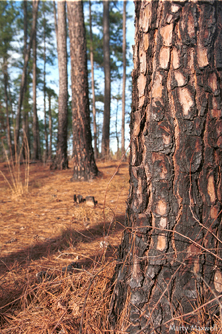| page last updated |
 |
River Tour | Estuary | Salt Marsh | |
| What is an Estuary? > Climate > Geology > Surface Water > Ground Water > Aquatic Habitat > Upland Habitat > Ecological Processes > Animals and Plants > Socioeconomic Values > Human Impacts and Pollution > Where does Your water come from? > Management Issues > Protecting YOUR Watershed | ||
|
K-12
Students Site
|
||
| Management Issues > Pollution > Fire Ecology > Erosion > Industrial Water Use > What You can do to help | ||||
|
Fire ecology is the planned, controlled burning of small areas of land. Certain ecosystems (long-leaf pine forest is one of them) are preserved naturally by fire. Through time, certain ecosystems adapted to being burned on a regular basis by fire caused by lightning strikes. Most fire-controlled ecosystems occur in parts of the world where lightning is regular at least part of the year. By setting controlled burns, forest managers can mimic natural burning in fire-controlled ecosystems. For a long time, forest managers suppressed all forest fires because of the fear that the fires would get out of control and be dangerous. We now know that it is dangerous to always suppress fire. When fires are suppressed, forests become overgrown. Overgrown forests are dangerous, because when a forest fire does occur, it becomes a huge wildfire. Today, forest managers organize small, planned controlled burns in order to keep forests from becoming overgrown. These "prescribed burns" reduce the risk of eventual wildfires. |
 |
|||
|
The blackened bark on this pine tree is the result of a prescibed burn. The pine needles accumulated on the ground around the tree indicate that the burn was some time ago. Click on the image for a larger view. |
||||